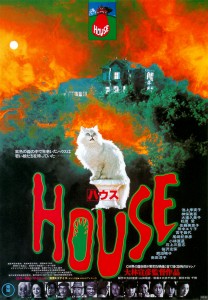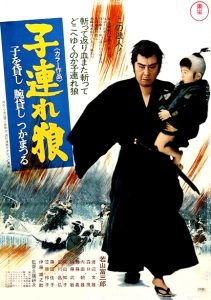Director: Jean-Stéphane Sauvaire
Cast: Joe Cole, Vithaya Pansringarm, Panya Yimmumphai, Somluck Kamsing, Billy Moore, Nicolas Shake, Sura Sirmalai, Sakda Niamhom, Komsan Polsan
Running Time: 117 min.
By Kelly Warner
We first meet British boxer Billy Moore preparing for a small kickboxing match in Thailand. The fight doesn’t go well for Billy. After the bout, he surrenders to his drug of choice, yaba (known as the ‘madness drug’). We don’t get to know much more about Billy before the cops kick down his door and lock bracelets over his wrists, but it’s clear that he is a lost soul in a foreign land. Whether he wanted this – maybe he purposefully lost himself in drugs and violence – is never really addressed. Billy barely understands Thai and the film does not allow the audience to understand much more than he does. Most the dialogue in the film goes untranslated. The result is that we, like Billy, feel a bit lost and lonely, too.
Billy is thrown in prison for his use of narcotics. He’s suffering from withdrawal, a lack of understanding, and overwhelming despair. On his first night, Billy is locked up with the general population, who all share one big floor as a bed. Rolling back and forth on the floor in pain, Billy hugs his nearest sleeping neighbor. A transwoman in the cell tells him to stop that; he’s not sleeping, he’s dead. And this is the good part of the prison. But after an altercation over spilled water, Billy is thrown out of gen pop and in with the harder criminals. Gangsters, all of whom are covered with tattoos, taunt and threaten Billy as soon as he steps into his new cell block. That first night there is a gang rape, the next morning there is a suicide.
A Prayer Before Dawn is a grueling, brutal true story about human suffering and devastating loneliness. When a prisoner steps out of line and lies to the guards, they drag him off and beat him, with his cries playing over loud speakers for all to hear. Desperate for his numbing drug, Billy takes jobs beating up prisoners that the guards don’t like in exchange for the yaba. But this only fuels his self-loathing, leading him spiraling down into the abyss. I was occasionally reminded of Midnight Express, the classic 1978 prison film from Alan Parker that shook me up with its portrayal of hell behind bars.
Billy is played by up-and-comer Joe Cole (Green Room), who brings the goods whether he’s raging against a prison population that doesn’t understand him or silently absorbing the mental torment of loneliness in hell. Most the cast is made up ex-inmates from the Thailand prison system. I cannot comment on their line readings in Thai but I always thought them an authentic, powerful force on camera. The only other actor of note is Vithaya Pansringarm (Only God Forgives), who plays the rarely seen prison warden. The real Billy Moore, who wrote the memoir on which the film is based, also has a cameo appearance.
At the heart of A Prayer Before Dawn is a story about overcoming your obstacles and overcoming yourself. Billy finds reason to wake up in the morning when he joins the prison’s boxing team and starts taking lessons from a tough to please coach. Billy also begins a relationship with a transwoman prisoner named Fame, one of the only people in the prison to show him compassion without asking for anything in return. Good days mix with the bad as he has to fight off his addiction while also fighting to improve his boxing skills. Eventually he gets a match that earns him both fans and enemies in the prison.
A Prayer Before Dawn is a pretty good movie – well acted, authentic in a way that you forget you’re watching a dramatization, and it refuses to pull its punches – but it lacks a certain narrative drive. It’s a slow film. And the suffering on top of suffering makes it feel like a long one, too. I wish we had gotten to know Billy more before he got arrested, so that we could’ve known him before he started to lose himself. Was even a good boxer? The only match we saw on the outside was a loss, so I don’t know. He has one Thai friend on the outside that comes to visit him once, but their conversation offer little new information and I do not think we even learn the kid’s name.
Before an all-important bout, Billy begins vomiting blood. He’s told by a doctor that he cannot fight, that his condition is very serious. Of course he ignores this and continues with the boxing match anyway because he needs to win. Maybe this is how it unfolded in real life. But for the movie, it feels like engineered drama rather than earned drama; just one more thing to throw into the mix to make the final fight that much more important and dangerous.
Considering how brutal the drama is, the fights are surprisingly more reserved. Though Joe Cole looks convincing as a kickboxer, the filming style for the matches is to hug the camera so close to the fighters that we barely see the punches and kicks. I guess director Jean-Stéphane Sauvaire (Johnny Mad Dog) was simply more interested in Cole’s face than he was his fists. But the result is that none of the fights are very special, except for what they mean to Billy.
A Prayer Before Dawn is a dreary, mean, ugly film. But it achieves a sort of realism that’s not easy to dismiss in cinema. You kinda can’t take your eyes off it. I just wish the film had offered us more reason to get behind Billy as a character. We feel for him – I guess the same way that we feel for a number of the other prisoners who were punished too severely for their crimes – but we never really get to know him beyond his struggles. I won’t dissuade anyone from seeing the film for themselves and making up their own minds, though, because there is something special at work here. It’s just not enough for me to give it my full endorsement.
Kelly Warner’s Rating: 6.5/10





















 I think it’s fair to say that Japanese cinema was a part of my movie watching experience since childhood. I was a kid who loved dinosaurs and as a result I loved watching dinosaur and monster movies. I didn’t really understand until much later that a sizeable number of these movies were made in other countries, many of them in Japan. They were dubbed and, to be honest, the human characters were never what I was tuning in for. While Japanese movies and I go way back, I don’t think I really started to consider myself a fan of Japanese cinema until I got in deep with the classic Toho sci-fi movies.
I think it’s fair to say that Japanese cinema was a part of my movie watching experience since childhood. I was a kid who loved dinosaurs and as a result I loved watching dinosaur and monster movies. I didn’t really understand until much later that a sizeable number of these movies were made in other countries, many of them in Japan. They were dubbed and, to be honest, the human characters were never what I was tuning in for. While Japanese movies and I go way back, I don’t think I really started to consider myself a fan of Japanese cinema until I got in deep with the classic Toho sci-fi movies.









1 Comment